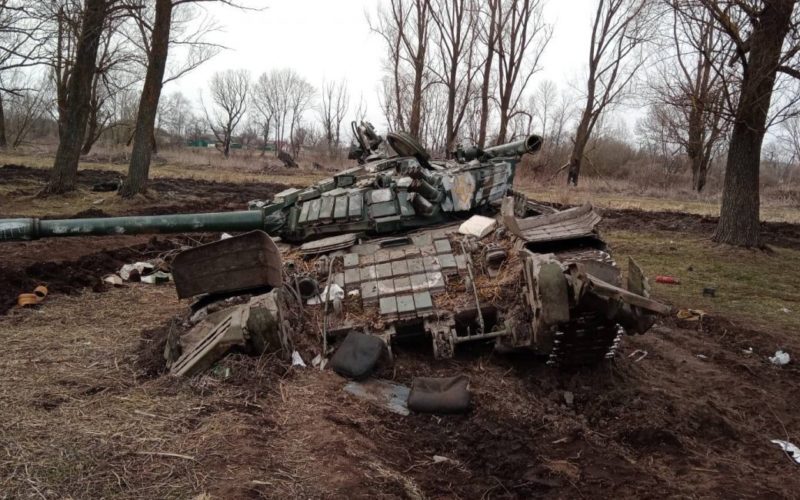Despite the ban, Russia equipped its tanks, planes and ships with equipment from the EU and the US, and was receiving weapons. What loopholes helped the Russians circumvent the sanctions and whether they will cover them up?
The 2014 sanctions against Russia and its military-industrial complex proved very weak. The Russians bypassed them, and the US and EU countries “did not notice” the loopholes and continued to cooperate with the aggressor.
Economists have often called Western sanctions “plush,” and Russian politicians have openly ridiculed such economic constraints because there were many ways to circumvent them.
For eight years, nothing prevented the occupier from equipping its tanks, planes, ships, and military vehicles with Western equipment and preparing for a new major massacre at the heart of Central Europe.
Only now have Western countries begun to take the first steps to close loopholes for Russia’s military complex, which has already claimed the lives of tens of thousands of Ukrainians.
What schemes have been used to supply weapons and parts, and are today’s measures by Western regulators effective?
Military equipment with Western tune-ups that kills Ukrainians
Russia’s military-industrial complex (MIC) is not self-sufficient. Most of its modern military equipment contains components from “unfriendly countries.”
Russian drones are an illustrative example. Their often-mentioned-in-the-news Orlan-10 and Forpost were shot down many times in the warzone, so the experts had enough opportunities to study them. It turned out that the whole world is building unmanned aerial vehicles for Russia.
So, the Orlan-10 drone contains a GPS module of the Swiss company U-blox, an engine of the Japanese SAITO, a starter-generator of the American Texas Instruments Inc and a flight controller of the French-Italian STMicroelectronics.
The Forpost drone is a copy of the Israeli IAI Searcher. Forposts are assembled at the Ural Civil Aviation Plant using Israeli technology from American and German parts. They even look the same.

Cooperation with the French electronics manufacturer Thales was important for the Russian military-industrial complex too. This company had modified over a thousand Russian tanks by 2020.
In particular, Thales’ Catherine FC thermal imager was used to create the Essa, Plisa and Sosna-U sighting systems. They are installed on modified tanks T-80, T-90, T-72 and other combat vehicles.

Thee thermal imagers have been assembled in Russia at the Volga Optical-Mechanical Plant under a license agreement with the French since 2009. These sights allow the gunner to see the enemy a few kilometers away, even at night.
The tanks with French equipment were used during the invasion of Donbas in 2014. This is evidenced by a video from inside a Russian T-72, which the Luhansk and Donetsk separatists tried to pass off as a trophy.
Ukraine captured Russian military vehicles with similar equipment during the Russian invasion in 2022.
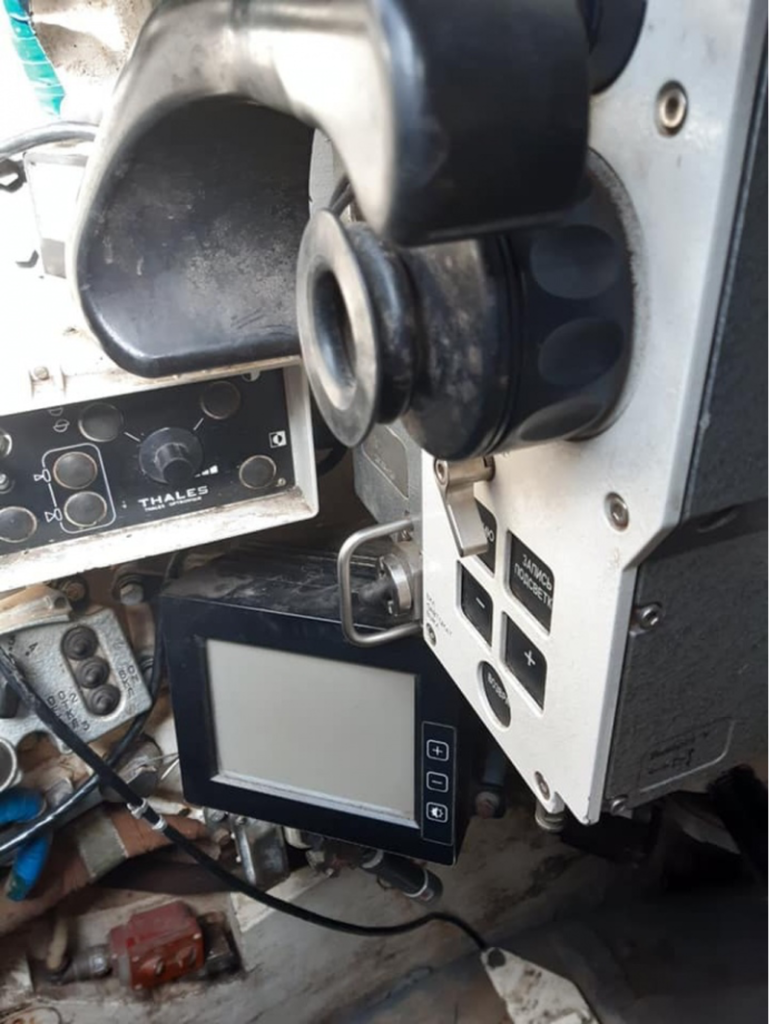
In addition, French thermal imagers were found on BMD4s Russian IFVs for airborn troups, which were shooting at civilian cars in Bucha.

Thales has also equipped the navigation systems of 60 Russian Su-30CM fighters that have shelled Syrian cities, according to Disclose. In March, these planes were shot down in the sky over Vasylkiv and Brovary in Ukraine.
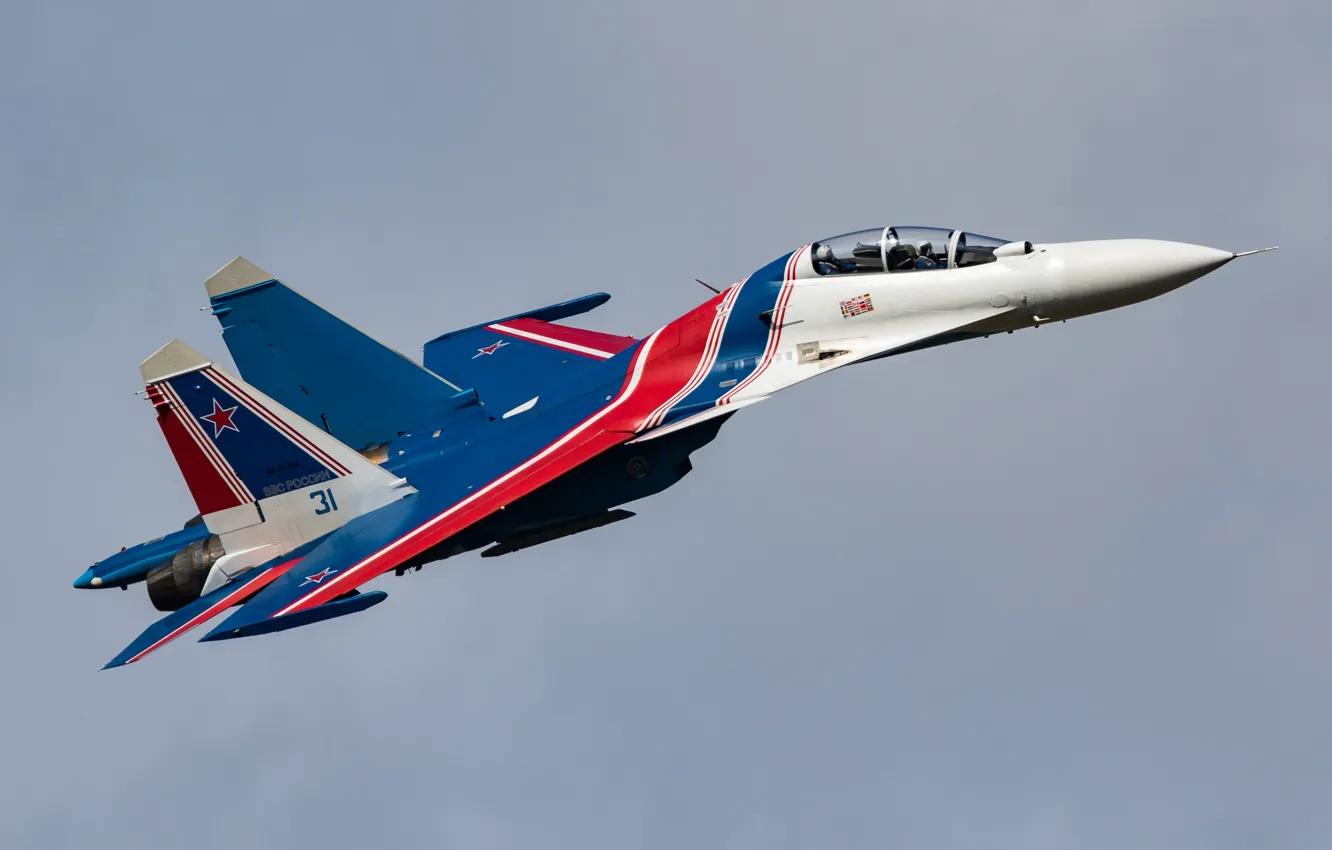
There is equipment that comes from Russia’s main adversary, the US. Although the Russians officially deny buying American weapons, components from the United States are often found within Russian equipment.
Russian sailors put thermal imagers made by the US company Flir on small warships. Components from the US are also in the drones Forpost, Zastava, Grenade and Orlan-10, admits the Russian edition of Military Review.
The KamAZ-65225 tugtrucks feature US-made Cummins engines and German ZF Friedrichshafen gearboxes. These trucks are used to transport Pantsir SAM, tanks, and artillery systems.
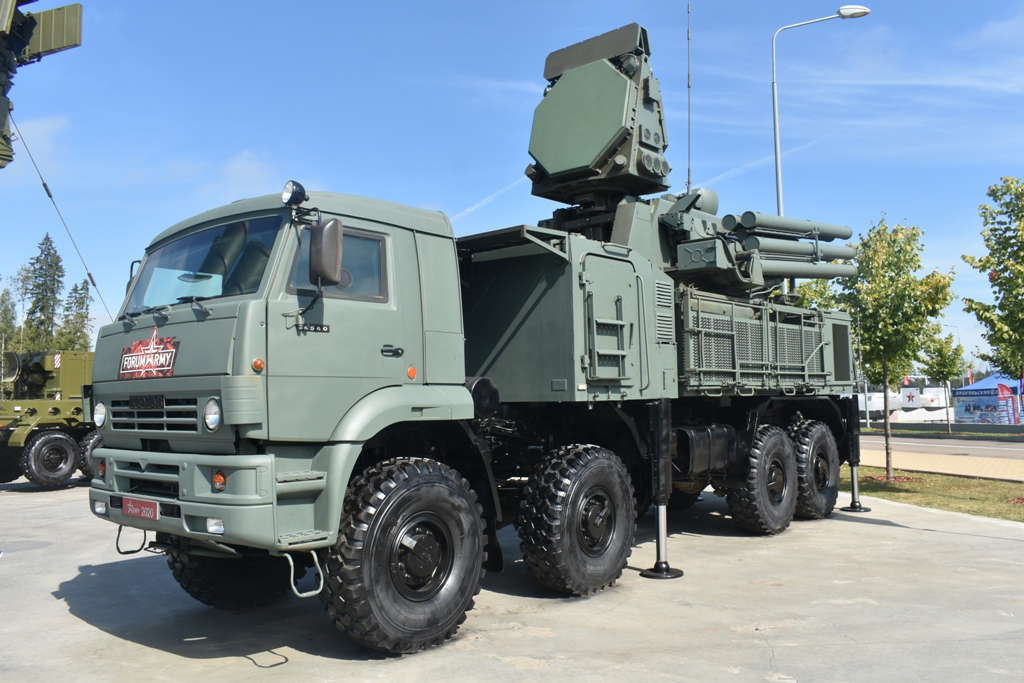

The Russian armored vehicle “Rys” (Russian for lynx) is actually an Italian Iveco LMV. According to Russia Beyond, hundreds of these vehicles were being delivered to Russia at least until 2016.
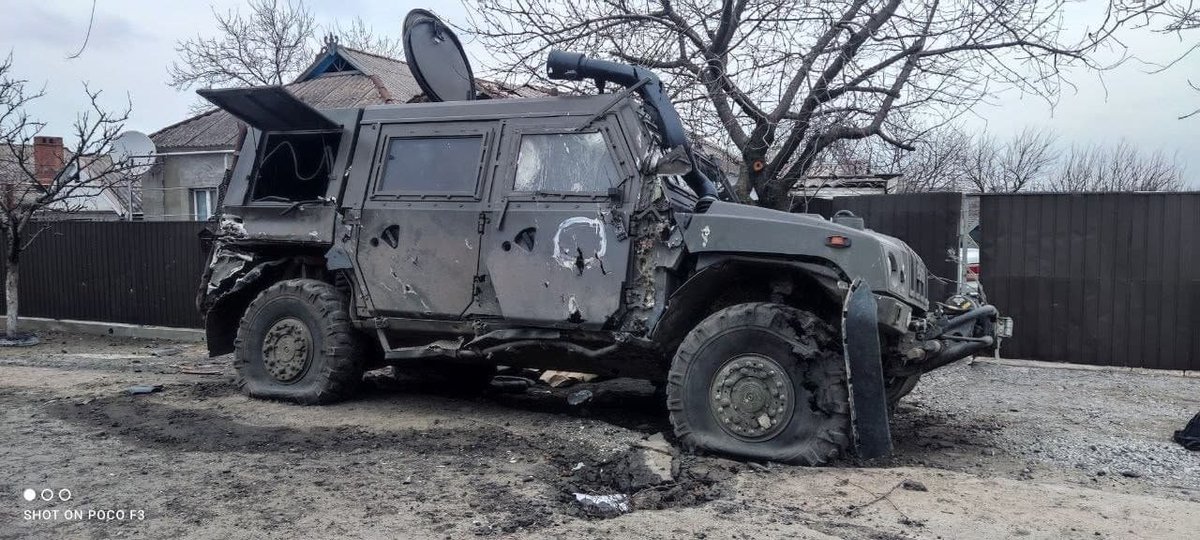
The Italians also sold rifles, pistols and ammunition to the occupiers a few months before Russia’s invasion of Ukraine, according to an Investigative Europe enquiry.
To be able to produce modern weapons, Russian factories use machines and inputs from Germany, the US and Switzerland. Russia wouldn’t have had such tools and outputs otherwise.
Russia has no capacity whatsoever to produce semiconductors. This is a big problem for their GLONASS navigation system that’s used to guide Russian cruise missiles in case of disconnection from the American GPS.

For GLONASS to work with minimal errors, it must be developed and launched from the satellites. And advanced satellites will not work without modern chips from Taiwan and the US.
The lack of semiconductors to launch satellites was a problem for Russia even before the war. In 2019, the State Duma had to reduce the navigation system program due to the inability to start the third-generation satellite “GLONASS-K” into mass production. The launch of the upgraded version of GLONASS-K2 has been on hold since 2017.
Another gap is avionics and aircraft engines. The Russians have problems providing their own aircraft with details. They have repeatedly tried smuggle routes from Finland and Ukraine to supply imported spare parts for modern combat aircraft.
Attempts to smuggle technological components are a common practice in Russia.In 2015, a resident of New Jersey, a native of Moscow, confessed to organizing the illegal export of electronics for the Russian military for $65 million.In 2019, the US Attorney's Office accused two men of smuggling microchips in Russia through fictitious Estonian companies.
This is by no means a complete list of Western technologies that Russia uses in the war with Ukraine.
Leaky sanctions
After the occupation of Crimea and part of Donbas in 2014, the EU imposed sanctions on Russia and banned the supply of weapons and dual-use goods (optics, electronics, and other spare parts that can be used in armaments).
A high-profile example is the canceled contract in 2015 for the supply of two French Mistral helicopter carrier ships for Russia worth $1.3 billion. France refused to cooperate with the aggressor under public pressure and sold these ships to Egypt.
However, there were less prominent cases when the EU countries did not stop supplying weapons and parts to the occupying country. To do this, there were loopholes that manufacturers and suppliers of weapons were willing to use.
The first loophole was the EU Council decision on sanctions against Russia: the embargo did not apply to contracts concluded before Russia’s invasion of Ukraine in 2014. This allowed arms manufacturers to obtain export licenses and conclude additional agreements with Russia to previous contracts. The European Council on Conventional Arms Exports has estimated that between 2015 and 2020, ten EU countries exported €346 million worth of arms to Russia. Germany and France used this loophole the most, accounting for 80% of all deliveries.
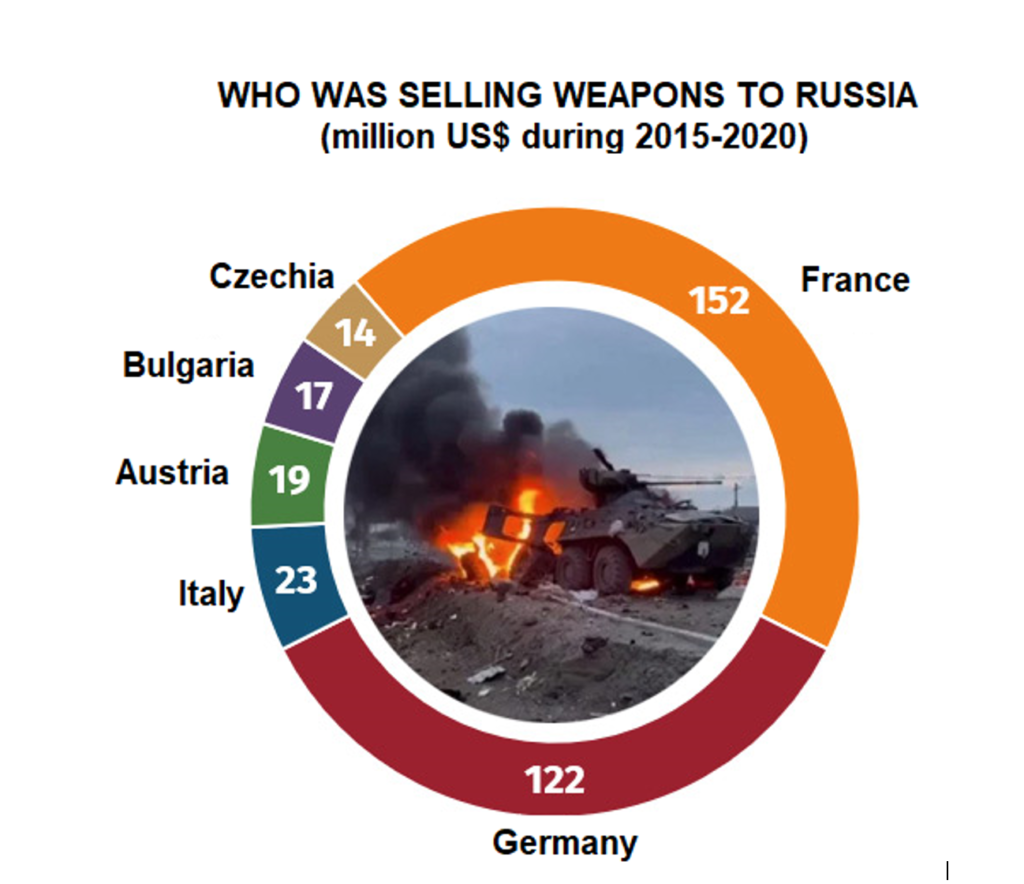
The French Le Figaro writes that official Paris has issued during this time at least 76 licenses to export military equipment to Russia and continued to fulfill previously signed contracts.
According to Reuters, in 2020 Russia exported weapons worth €25 million, and in 2021, during which Russia transferred equipment closer to Ukraine’s borders and threatened its neighbors with nuclear weapons, supplies increased by 55% to €39 million.
At first glance, €385 million in six years is not much compared to the inflated defense budget of Russia, which in 2021 amounted to $61.7 billion.
In fact, these millions are much more expensive for the Russian army than the billions spent on its own capabilities. Thanks to technological imports from “unfriendly countries”, the Russians were able to improve Soviet technology and develop their own.
The second loophole concerns dual-use goods. They were banned from supplying Russian military enterprises, but European spare parts and machines were regularly supplied to Russian military-industrial complex plants.
The sanctions imposed by Europeans in EU Council Regulation #833/2014 contained an exception: a state may allow the export of goods if it is confident that the goods will not be used for military purposes. This vague wording allowed dual-use goods to be supplied to fictitious Russian firms or distributors, who later resold them to military companies.
According to Investigative Europe, German exports were mainly labeled as dual-use items.
Case 1. How Russians circumvent sanctions.
The Russian Lipetsk Mechanical Plant (Russian abbreviation LMZ) produces tractors for the S-300 anti-aircraft missile system. It did not fall under Western sanctions in 2014 and was free to negotiate with foreign companies.
From the correspondence of the plant’s top managers, which became public after the hacking of LMZ by the Anonymous hacker group, it became known that representatives of the Russian company negotiated with foreigners and sent correspondence to managers of the Kalashnikov concern, which has been under the EU sanctions.
Formally, LMZ has nothing to do with Kalashnikov Concern or its parent company RosTech.
At the same time, the published correspondence testified that the commercial director of the Lipetsk plant, Dmitry Belykh, carried out orders and acted in the interests of the Kalashnikov. In particular, the management of LMZ helped Kalashnikov in finding a line for the production of ammunition and agreed with the Belgian manufacturer New Lachaussée, whose management sent an official commercial offer to the Russians.
The correspondence between LMZ and Kalashnikov testify to this.
Thus, on November 29, 2021, Kashiya Grashchenkova, Adviser to the Kalashnikov Procurement Director, asked Dmitry Belykh to send commercial requests for the purchase of a cartridge production line to a number of foreign companies listed in the appendices – Atech (Turkey), Invernizzi Presse (Italy), MANURHIN K` MX (France), New Lachaussée s.a. (Belgium) and Vasini (Italy). Belykh reported back to Graschenkova. Most companies did not respond; the Italian Invernizzi Presse did respond initially but later stopped communication.
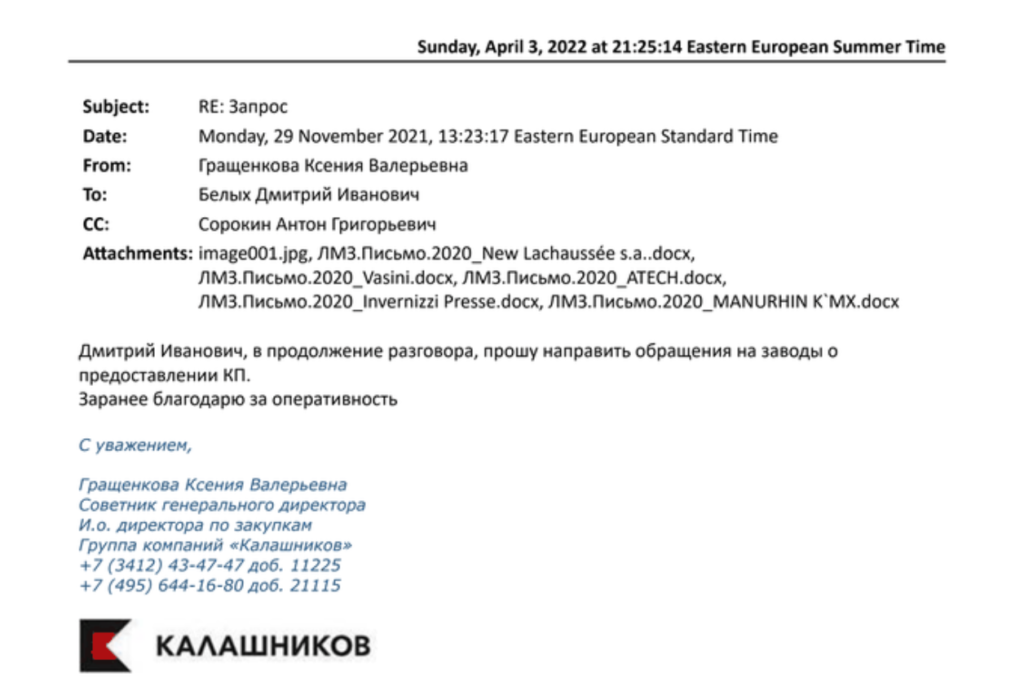
Further correspondence with manufacturers is conducted on the chain “Kalashnikov – Lipetsky mechanical factory – an international manufacturer.” However, on December 3, 2021, a representative of the Belgian New Lachaussee s.a. Igor Zagivil responded. His contacts were forwarded to the Kalashnikov Concern by the commercial director of LMZ.

The proposal was referred to the Tula Arms Factory and signed by the Belgian directors. The Tula Arms Factory is part of Russia’s RosTech state company, as is the Kalashnikov concern.
White sent all the information to the mentioned Grashchenkova from the Kalashnikov concern
The proposal has already been addressed to the Tula Arms Factory and signed by Belgian directors. The Tula Arms Factory is also indirectly part of Russia’s Rostech state company, as is the Kalashnikov concern. D.Belykh sent all the information to the mentioned Grashchenkova from the Kalashnikov Concern.
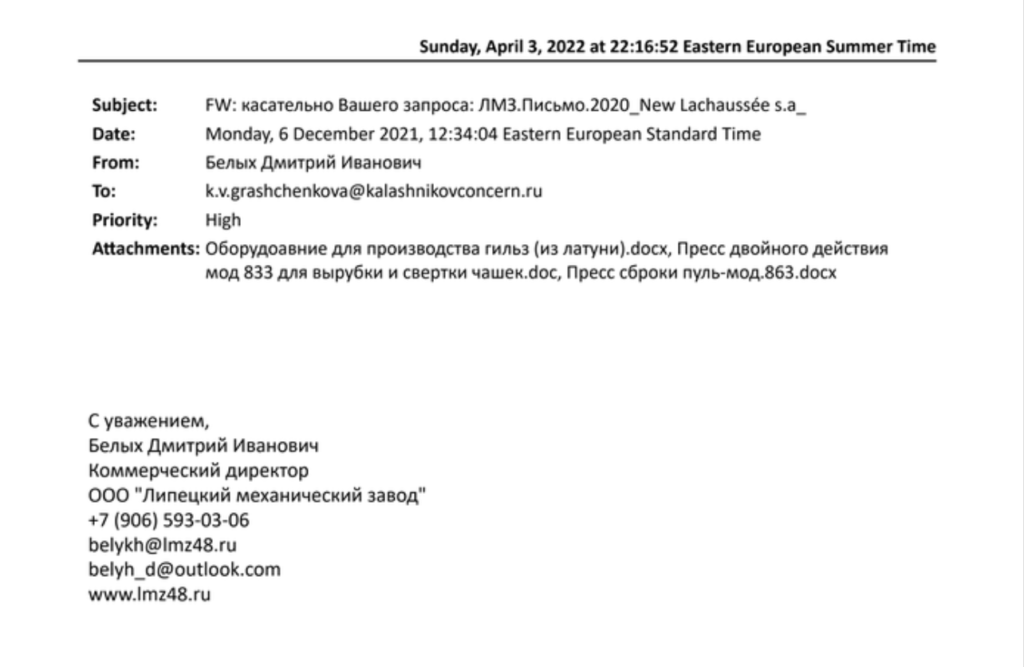
Case 2. The official website of Russian public procurement has listed how the Russian military-industrial complex buys Western equipment.
Ukrainian businessman Dmytro Dubilet created a “mirror” of this procurement site. It lists all foreign companies whose products featured in the tenders of companies associated with the Almaz-Antey Concern of the Russian military-industrial complex.
The Russian Almaz-Antey Concern produces anti-aircraft missile and radar equipment for the Russian army, including the infamous S-300, S-400, S-500 (“beech”). It has also been under sanctions since 2014.
The Europeans are prohibited from trading with it, either directly or indirectly, through dealers or otherwise. However, the constituent enterprises within this Concern do not hesitate to hold tenders for products of foreign manufacturers.
Here’s an example: Almaz-Antey needed lubricating and cooling fluid for metalworking from the leading German manufacturer TechLube GmbH. According to public procurement, the little-known Russian LLC “Quarta” won Almaz-Antey’s tender for the supply of this product.
The German manufacturer has an official representative office and hundreds of customers throughout Russia. Probably, at first the goods were delivered for “peaceful” Russian companies, but then the military got them.
There are many such examples. Almaz-Antey purchased German high-precision measuring equipment manufactured by Zoller at a tender in March 2022.
Almaz-Antey concluded tenders for unique equipment from Western leading manufacturers and no sanctions prevented this. In general, Almaz-Antey received equipment from the Swiss Blaser Swisslube, American Nvidia and Indium, German Zoller, Walter, TechLube GmbH, British GARANT etc.
Other cases. When we talk about the export of dual-use goods to Russia, the scale is very significant. Welt am Sonntag writes that in 2020, Germany alone issued 673 export licenses to Russia for €366 million.
According to Deutsche Welle, several criminal cases have already been opened in Germany for violating EU regulations on exports of these goods.
Some companies supplied goods for military use even without obtaining special licenses. For example, the German Bosch insisted that it sells vehicle equipment exclusively for peaceful purposes, and its equipment was found on Russian “BMP” IFVs seized by the Ukrainian army. Due to the scandal, the company stopped deliveries to Russia.
The focus was also on the German company ZF Friedrichshafen, which supplied car parts allegedly only for civilian use. Russian military experts say that the ZF gearbox has long been an indispensable component for KamAZ-65225 military tractors, which transport heavy weapons.
What has changed?
Some of the mistakes made in 2014 were corrected during a new wave of sanctions. The EU has subsequently removed the fulfilling-old-contracts loophole, which was used by European manufacturers to export weapons to Russia.
The list of companies associated with the Russian military-industrial complex has been expanded, and sanctions have been tightened against them. A number of European manufacturers have stopped supplying spare parts to Russia.
Russian companies have already suffered from this measure. The management of UralVagonZavod made some of its workforce idle due to lack of foreign components. The company itself is currently unable to assemble tanks and is forced to operate at a loss.
Due to sanctions, the KamAZ plant was left without American and German spare parts, which will force it to abandon the production of powerful towtrucks used in the armed forces.
According to Ukrainian intelligence, the Ulyanovsk Mechanical Plant, a Russian manufacturer of radar systems and SAMs (surface-to-air missile systems), also stopped due to a lack of spare parts.
A separate ban was imposed on the export of microelectronics, which in 2014 was for some reason ignored.
Europol, together with the EU and Fortex, has launched Operation Oscar to monitor compliance with sanctions. It will support criminal investigations against fraudsters who circumvent the export ban.
All these sanctions could have been imposed in 2008, when Russia invaded the territory of sovereign Georgia, or in 2014, when the aggressor country occupied Ukrainian Crimea. Perhaps this would have deterred further conflicts.
However, the problem with dual-use goods remains open. The second package of EU sanctions, adopted on February 25, provides for a broader ban on exports of these goods to Russia, but again, without exception.
First, export restrictions again did not affect pre-war contracts.
Secondly, the EU has left a short list of conditions under which dual-use goods can still be delivered to Russia. It is unknown whether these exceptions will help continue to supply equipment to the Russian military-industrial complex.
The official list of dual-use goods from the EU needs to be updated, as it does not include some of the components used by the Russian army. First of all, it concerns automobile spare parts.
German MEP Michael Haller has already spoken about the failure of sanctions against dual-use goods. Ukraine should also advocate for the strengthening of restrictions, using its own diplomatic channels.
Russia is a Nazi militarized state. Any export of dual-use goods to Russia can be used in the military-industrial complex. This means that the ban on trade in technology must be comprehensive and without any exceptions.
SOURCE: https://www.epravda.com.ua/publications/2022/04/22/686100/
BOHDAN MIROSHNYCHENKO, DMITRY DENKOV




